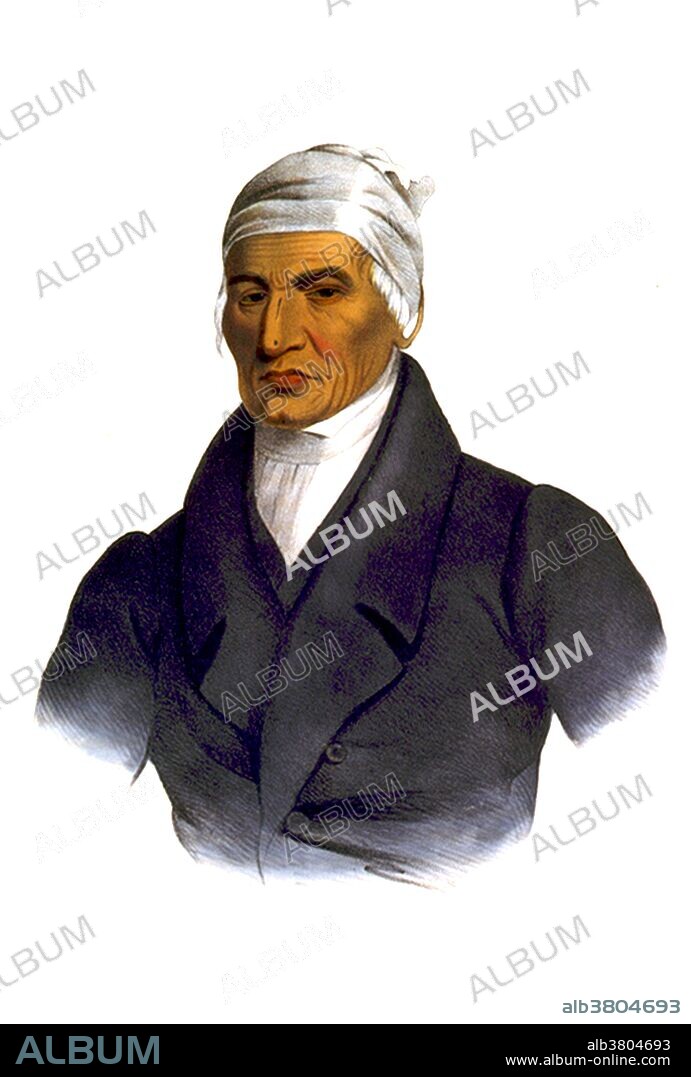alb3804693
Black Hoof, Shawnee Indian Chief

|
Ajouter à une autre Lightbox |
|
Ajouter à une autre Lightbox |



Avez-vous déjà un compte? S'identifier
Vous n'avez pas de compte ? S'inscrire
Acheter cette image

Titre:
Black Hoof, Shawnee Indian Chief
Légende:
Voir la traduction automatique
Ca-Ta-He-Cas-Sa-Black Hoof lithograph, 1838. Catecahassa or Black Hoof (1740 - 1831) was the head civil chief of the Shawnee Indians who became known as a fierce warrior during the early wars between the Shawnee and Anglo-American colonists. During the American Revolutionary War, he may have taken part in the siege of Boonesborough in 1778, which was led by Chief Blackfish, as well as the subsequent defense of the Shawnee village of Chillicothe in 1779. In the Northwest Indian War, Black Hoof was defeated by "Mad" Anthony Wayne and, following the collapse of the Indian confederation, surrendered in 1795. Black Hoof decided that American Indians needed to adapt culturally to the ways of the whites in order to prevent decimation through warfare. During his later years, Black Hoof became an ally of the US and was responsible for keeping the majority of the Shawnee nation from joining "Tecumseh's War", which became part of the War of 1812. He resisted the policy of Indian removal that the United States implemented soon after the War of 1812. He never signed a removal treaty, and continued to lead his tribe until his death in 1831. After his death, the Shawnee were eventually compelled to emigrate to the West.
Personnalités:
Crédit:
Album / LOC/Science Source
Autorisations:
Modèle: Non - Propriété: Non
Questions sur les droits?
Questions sur les droits?
Taille de l'image:
2835 x 4200 px | 34.1 MB
Taille d'impression:
24.0 x 35.6 cm | 9.4 x 14.0 in (300 dpi)
Mots clés:
AMÉRICAIN • CATECAHASSA • CÉLÈBRE • CELEBRITE • HOMME • ILLUSTRATION • INDIEN D'AMERIQUE • INDIEN • INDIENNE • INDIENS AMERICAINS • INDIENS • LITHOGRAPHIE • PERSONNAGES • PERSONNALITÉS • PERSONNE
 Pinterest
Pinterest Twitter
Twitter Facebook
Facebook Copier le lien
Copier le lien Email
Email
